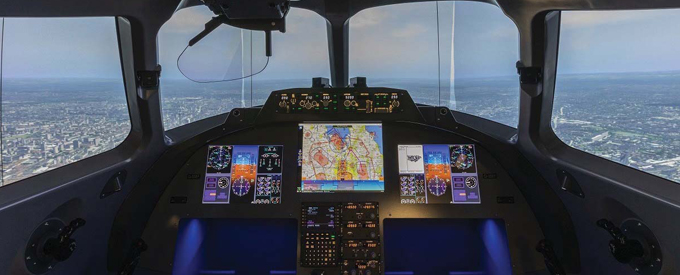2022-06-01
BAE Systems Unveils LiteWave Heads-Up Display
Recently, BAE Systems launched LiteWave, a laptop-sized Heads-Up Display (HUD). It is mounted above the pilot’s head and presents critical information, such as direction, altitude, and speed, directly in their line of sight. Being 70 per cent smaller and lighter than a traditional HUD, LiteWave can be fitted in aircraft with limited cockpit space. It’s also up to 80 per cent faster to install, and its simple design makes maintenance quicker and cheaper.
Powered by BAE Systems’ patented waveguide technology, the HUD can be easily adjusted to suit any individual flying position and allows the pilot to maintain situational awareness, even during poor weather or at night.
A HUD offers an intuitive augmented reality display that provides critical information when and where needed most. It focuses on reducing a user’s workload to focus on the task ahead, giving them the essential edge they need, where it counts. It presents critical flight information to the pilot – from airspeed, altitude, and the horizon line to the flight path vector, turn/bank indicators, angle of attack, etc.
“LiteWave can be fitted into virtually any cockpit in the world,” said Lee Tomlinson, director of HUD products at BAE Systems’ Electronic Systems business. “Our engineers have created a digital display that is smaller, lighter and uses less power than any other Heads-Up Display. It has the potential to revolutionise the market and make HUD technology far more accessible.”
LiteWave marks the next stage in bringing state-of-the-art digital technology to the marketplace and is now available to begin flight trials for future customers on commercial and military aircraft.
Moreover, the HUD offers one of the largest eye-motion boxes available, which means pilots can move more freely in their seats without the risk of losing sight of the display. This freedom of movement allows to maintain comfort and not be stuck in one position, which is especially important on long flights.
Some of the benefits of the latest HUD include that it easily integrates into cockpits with limited space and is cost-effective up front and through the product’s lifecycle. It enhances pilots’ freedom of movement without losing the sight of the display. It offers a significant increase in the meantime between failure (MTBF) compared to traditional HUDs, which results in a substantial increase in reliability. Additionally, the high-resolution display provides pilots with crisp symbology under all flight conditions and a fully digital display with no loss of brightness over time.
LiteWave also offers completely agnostic architecture making it compatible with any third party EVS sensor, and its initial install time is reduced by 20 hours. Furthermore, a single configuration is required for an entire fleet.
The HUD is manufactured at the BAE Sy Electronic Systems site in Rochester, UK, which has innovated and invested in cockpit displays for over 60 years. The Rochester site has produced more than 15,000 HUDs, which are in service on more than 50 different aircraft types in more than 50 countries globally. This includes some of the most advanced and demanding military aircraft, such as the Eurofighter Typhoon, F-16 Fighting Falcon and F-22 Raptor.
Since developing the world’s first operational HUD back in the 1950s, BAE Systems has pushed the boundaries of what’s possible in the realm of augmented reality. The development of the LiteWave display is no exception. Today’s more advanced systems see the introduction of advanced digital display drives – significantly increasing the performance and reliability of the display whilst reducing overall weight.


No Comments